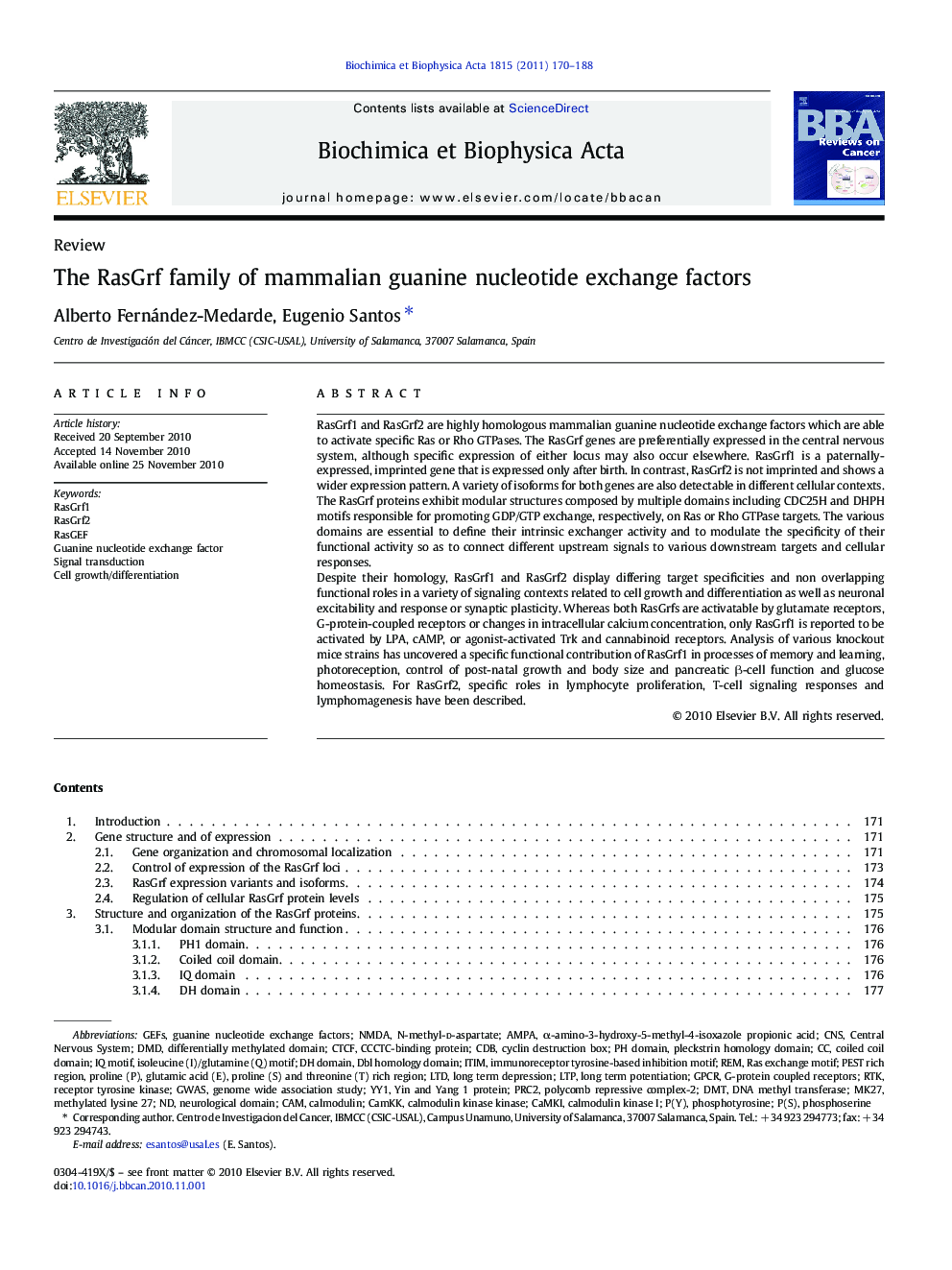| Article ID | Journal | Published Year | Pages | File Type |
|---|---|---|---|---|
| 10895621 | Biochimica et Biophysica Acta (BBA) - Reviews on Cancer | 2011 | 19 Pages |
Abstract
Despite their homology, RasGrf1 and RasGrf2 display differing target specificities and non overlapping functional roles in a variety of signaling contexts related to cell growth and differentiation as well as neuronal excitability and response or synaptic plasticity. Whereas both RasGrfs are activatable by glutamate receptors, G-protein-coupled receptors or changes in intracellular calcium concentration, only RasGrf1 is reported to be activated by LPA, cAMP, or agonist-activated Trk and cannabinoid receptors. Analysis of various knockout mice strains has uncovered a specific functional contribution of RasGrf1 in processes of memory and learning, photoreception, control of post-natal growth and body size and pancreatic β-cell function and glucose homeostasis. For RasGrf2, specific roles in lymphocyte proliferation, T-cell signaling responses and lymphomagenesis have been described.
Keywords
REMDNA methyl transferaseYY1CTCFPRC2CaMKKRTKRasGEFITIMDMDCDBα-amino-3-hydroxy-5-methyl-4-isoxazole propionic acidGPCRN-methyl-d-aspartateNMDAAMPADMTRASGRF1coiled coil domaindifferentially methylated domainCaMKIGEFsG-protein coupled receptorslong term depressionimmunoreceptor tyrosine-based inhibition motiflong term potentiationLTPPH domainPleckstrin homology domainCNSCAMcentral nervous systemGuanine nucleotide exchange factorsguanine nucleotide exchange factorphosphotyrosinephosphoserineLTDgenome wide association studyGWASIQ motifSignal transductionCalmodulinReceptor Tyrosine Kinase
Related Topics
Life Sciences
Biochemistry, Genetics and Molecular Biology
Cancer Research
Authors
Alberto Fernández-Medarde, Eugenio Santos,
